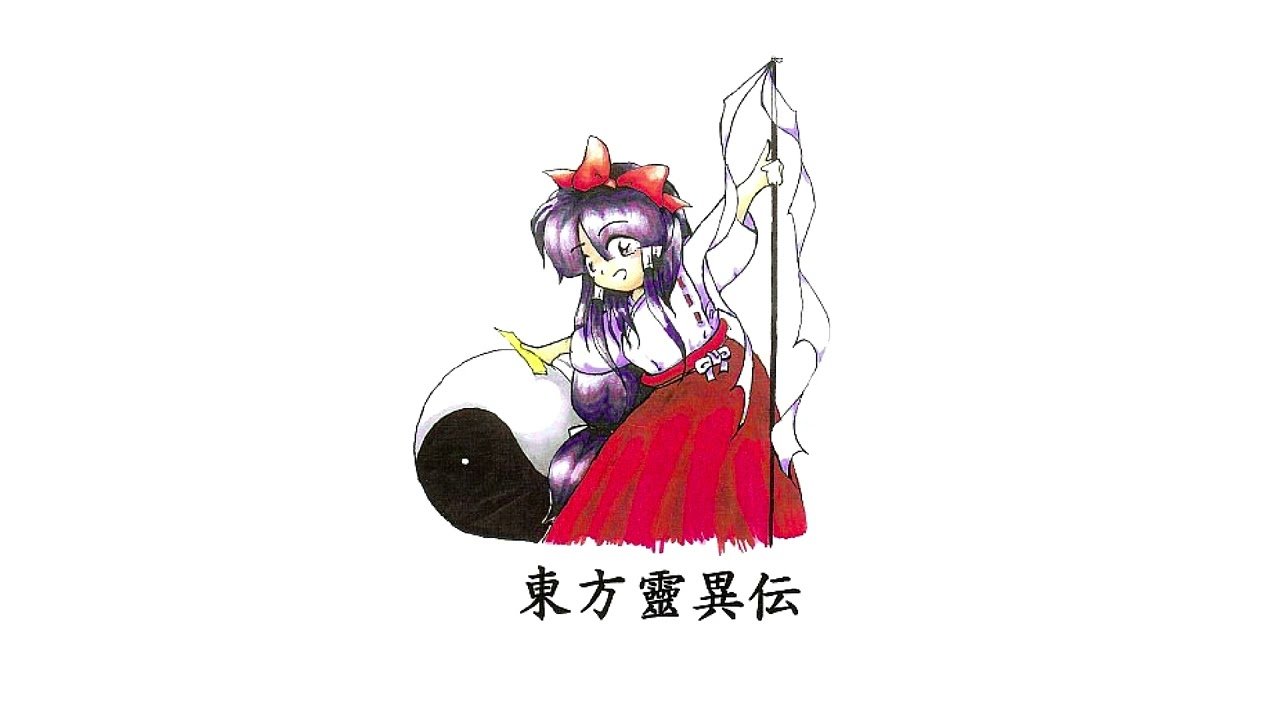3 min to read
Touhou: Highly Responsive to Prayers
Touhou: Highly Responsive to Prayers is the first installment in the Touhou Project series, featuring a unique blend of bullet hell and block-breaking gameplay released for the PC-98 in 1997.

The following is the official PC98 Japan release version of the game.
About the game
Touhou: Highly Responsive to Prayers (東方靈異伝, Tōhō Rei’iden) is the first game in the prolific Touhou Project series, developed by Team Shanghai Alice, with ZUN as the sole developer. Released in 1997 for the NEC PC-9801, this game laid the foundation for what would become one of the most enduring and beloved franchises in the realm of doujin (fan-created) games.
The gameplay of Touhou: Highly Responsive to Prayers is a unique amalgamation of two genres: bullet hell shooter and block-breaking action. Players take on the role of Reimu Hakurei, a shrine maiden tasked with protecting the mystical Hakurei Shrine. The game’s plot is set into motion when the shrine is attacked, prompting Reimu to venture into various mystical realms to find and punish the perpetrators.
The core gameplay is divided into two modes, which the player alternates between as they progress through the game: the Shrine Realm and the Hell Realm. In the Shrine Realm, players must clear each stage by breaking all the blocks using a yin-yang orb, which they control with Reimu’s melee attacks. This mode is reminiscent of classic block-breaking games like Arkanoid but with a magical twist. Reimu can launch the orb at angles and use her spiritual power to alter its trajectory, adding a layer of strategy to the gameplay.
In the Hell Realm, the game shifts to a more traditional bullet hell format. Reimu faces off against various enemies and bosses, dodging intricate patterns of bullets while retaliating with her own attacks. This mode demands precise maneuvering and quick reflexes, characteristic of the bullet hell genre. The transition between these two gameplay styles keeps the experience dynamic and challenging.
The game’s aesthetics are deeply rooted in Japanese mythology and Shinto beliefs, with intricate character designs and a rich, atmospheric soundtrack composed by ZUN. Despite the limitations of the PC-98 hardware, the game manages to convey a strong sense of place and mysticism through its pixel art and music.
A notable aspect of Touhou: Highly Responsive to Prayers is its difficulty. The game is known for being challenging, requiring players to master the mechanics of both gameplay styles to progress. The difficulty curve is steep, but it is also a hallmark of the series, appealing to players who enjoy testing their skills against tough challenges.
In terms of legacy, Touhou: Highly Responsive to Prayers is significant for several reasons. It marks the beginning of ZUN’s Touhou Project, which would grow to include numerous sequels, spin-offs, and a vast array of fan works, including music, art, and even fan-made games. The game’s innovative blending of genres set it apart from other titles of the time and helped to establish the distinctive identity of the Touhou series.
Moreover, the game introduced several characters and themes that would become central to the series. Reimu Hakurei, the protagonist, would go on to appear in nearly every subsequent game, becoming an iconic figure in the world of doujin games. The game’s emphasis on Shinto and Buddhist mythology also set the tone for the series’ deep narrative and cultural references.
In conclusion, Touhou: Highly Responsive to Prayers is more than just a game; it is the genesis of a cultural phenomenon. Its unique gameplay, challenging difficulty, and rich thematic elements make it a standout title in the PC-98 library and a cornerstone of the Touhou Project series. The game’s enduring legacy is a testament to its innovative design and the passionate community it has inspired over the decades.
Resources
- Cover image credits: https://www.youtube.com/watch?v=K-OEcrk4cjw